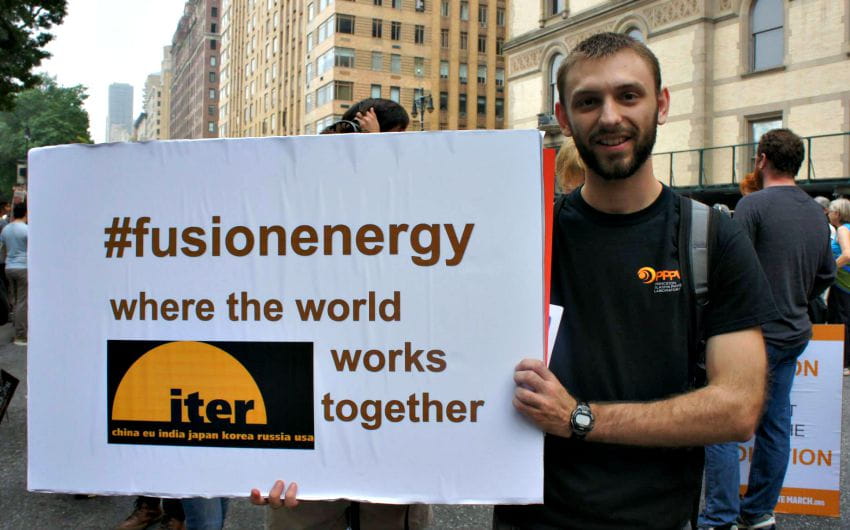A Co-op Conducting Trailblazing Research For a Brighter Tomorrow

During his co-op, Matthew Parsons isn’t just the only employee writing code to predict plasma disruptions at the Princeton Plasma Physics Laboratory, he is the only computational physicist in the U.S. doing that type of research.
Parsons, who will graduate this term with a B.S. in physics, a minor in mathematics and distinction from the Pennoni Honors College, has always been interested in fusion research. Fusion, the process which powers stars, involves heating hydrogen up to tens or hundreds of millions of degrees centigrade. At those temperatures, a new state of matter, plasma, is formed when the negatively charged electrons are stripped from the positively charged nuclei. By chance, some of these positively charged nuclei will collide with enough energy to fuse together, creating helium and releasing energy that can be extracted to produce electricity.
“I am really interested in environmental issues, and electricity production is one that I felt that I could make a difference in. Nuclear fusion can provide a clean source of energy and I think helping to develop it into a viable source is the most significant thing that I could do with my career,” Parsons said.
One problem, though, is that the plasma can suddenly lose its energy in an event called a “disruption.” Plasma disruptions are so complex that there aren’t any good physical models to predict them, Parsons says. That’s where his research comes in.
“I can use statistical models to try to predict when these disruptions occur,” he explained. “I read in signals from a fusion experiment describing the temperature, density, electrical current, and other properties of the plasma, and train a computer model to recognize when a disruption is going to happen.”
It’s fitting, then, that Parsons is conducting this groundbreaking research at the Princeton Plasma Physics Laboratory, the leading U.S. institution in fusion research. He completed his second co-op there too, and will continue working at the laboratory after graduation on a one-year research appointment. It’s a dream come true for someone who knew he wanted to work at the Princeton Plasma Physics Laboratory before he even started college.
“I love finding new ways to think about problems, so my favorite part of this research is that it takes a completely non-traditional method — machine learning — and applies it to an important physics problem — plasma disruptions,” Parsons said.
Another bonus is that the job is internationally collaborative, said Parsons, the recipient of a Goldwater Honorable Mention. He uses data collected from the Joint European Torus, the world's largest magnetic confinement plasma physics experiment. Plus, the work Parsons is doing will aid in developing disruption prediction software for ITER, an international project located in France that aims to design and build an experimental fusion reactor.
Parsons hopes to pursue a PhD in nuclear engineering at MIT, another groundbreaking site for nuclear fusion research, and he’s currently applying for a Fulbright grant to work at ITER starting in the fall of 2016.
“I want to be a part of this project's success, and I intend to be in the control room when ITER first produces net positive energy,” Parsons said. “Getting affiliated with the scientists there now is what will make that possible, and will also help me to focus my doctoral research on a very applicable topic when I return for grad school.”
In This Article
Drexel News is produced by
University Marketing and Communications.

